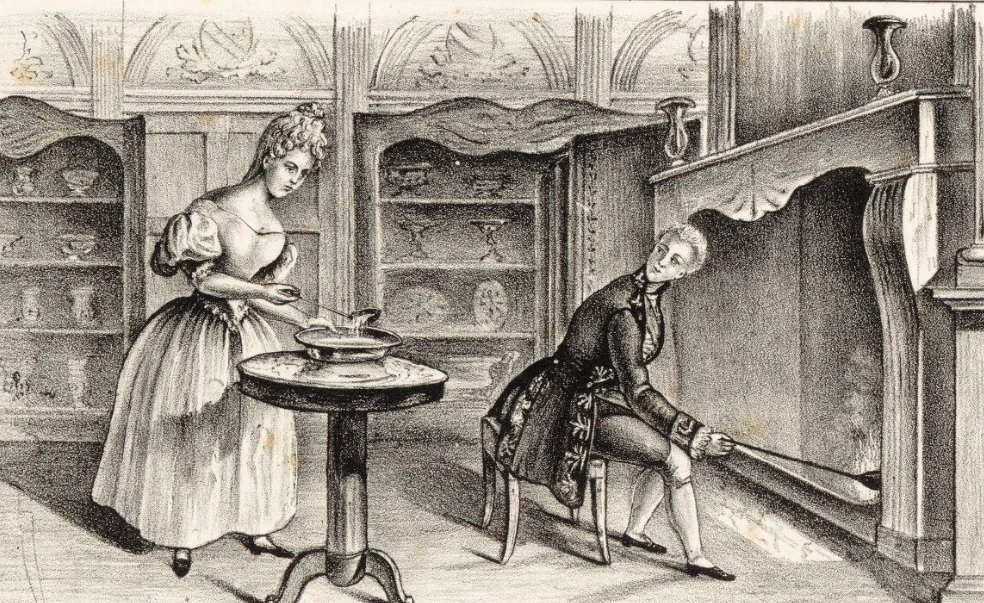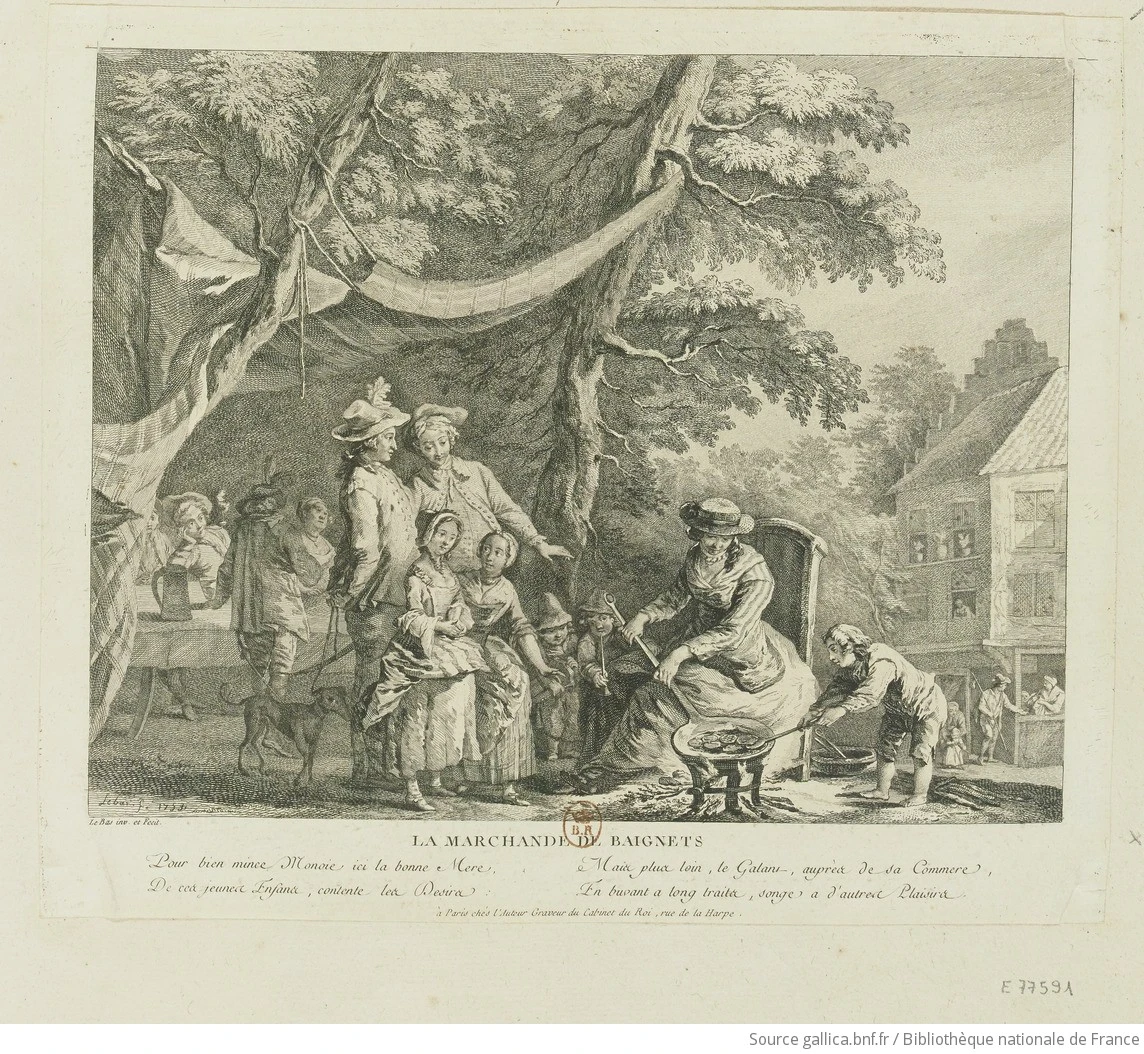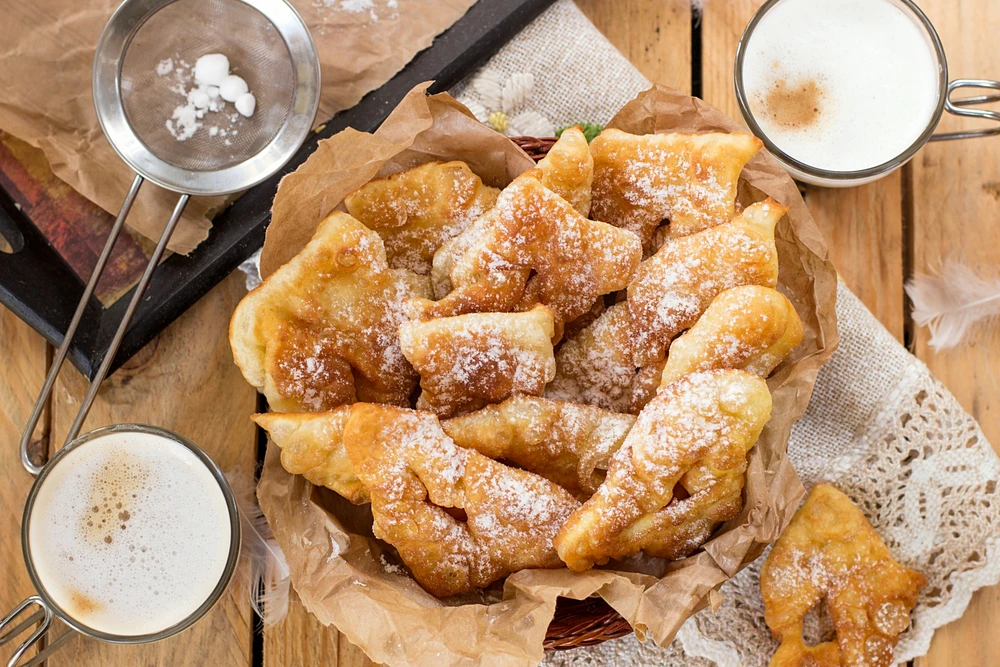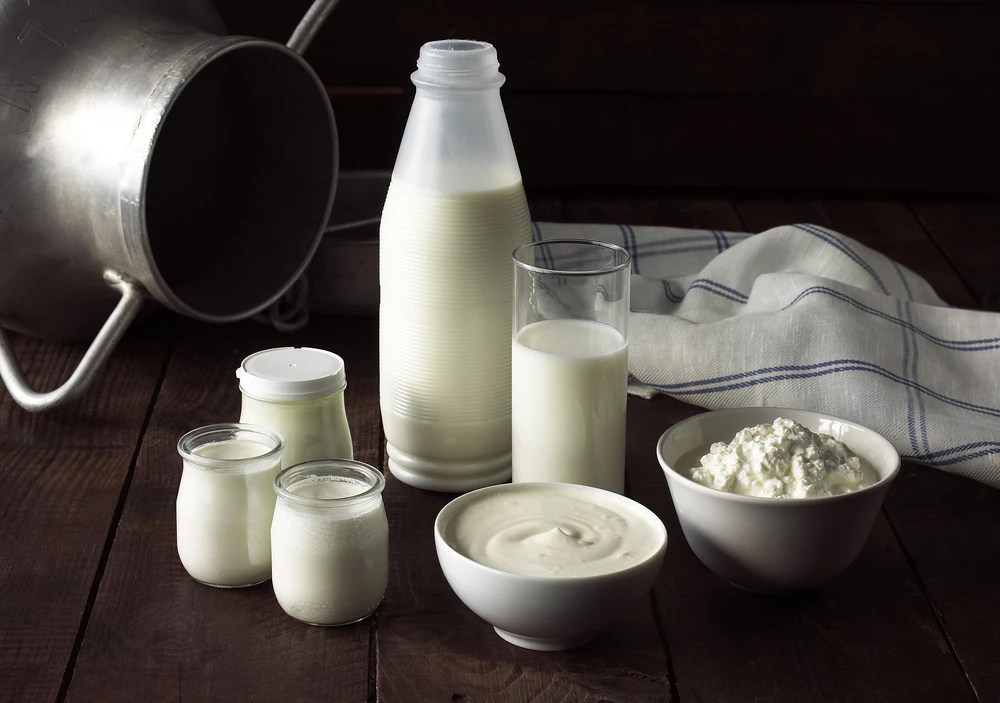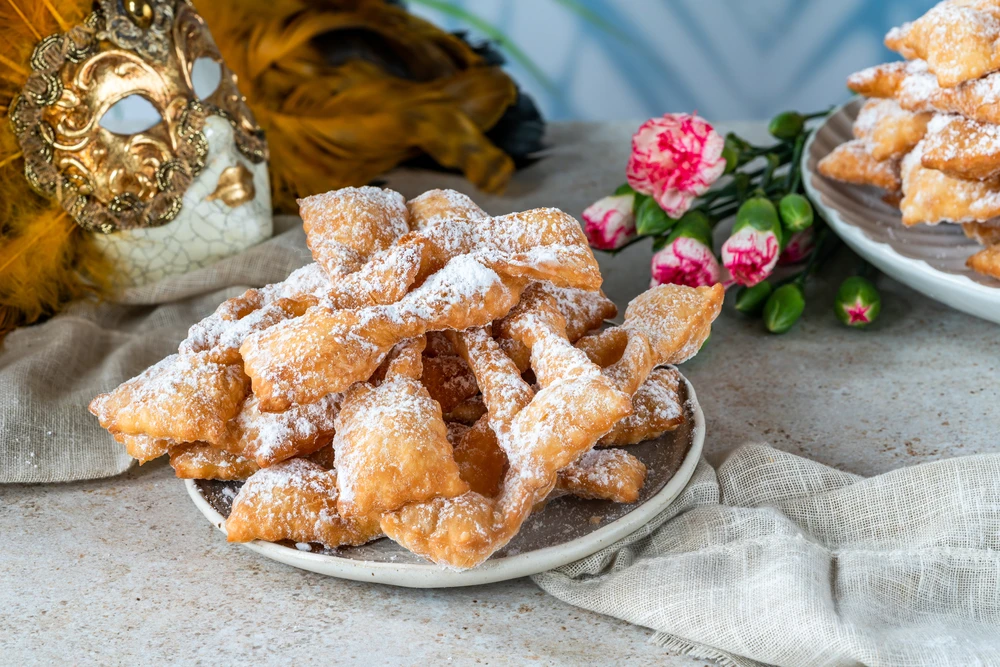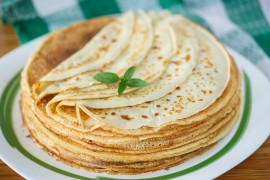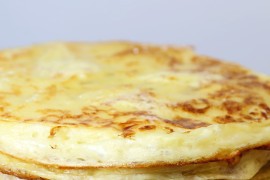A brief history of doughnuts
The art of making doughnuts in the 18th century. Satirical view via Gallica.fr / BNF.
An old French word
The word "beignets" comes from "beigne", and in slang, a beigne is a slap in the face. But no! In this case, "beigne" comes from the Old French "bigne", meaning to raise. In this case, like dough. Clearly, the Gauls were already making them. Frying dough is an old idea already practiced by the Greeks, Romans, Arabs...
The doughnut merchant. Image chosen by monsieurdefrance.com: 18th-century engraving via Gallica.fr / BNF.
Carnival doughnuts" aren't called "beignets de carnaval" everywhere , and recipes can vary. In Berry, we eat"beugnons", around Orléans or in Anjou, we eat"croquignolles", Auvergnats eat"guenilles", in Bordeaux or in Limousin we eat"merveilles", in Vendée it's"tortisseaux", in Lyon it's"bugnes" and in Burgundy it's"fantaisies".
Carnival doughnuts / photo selected by monsieurdefrance.com: larik_malasha
Why donuts on mardi-gras?
Because the Christian religion forbade fatty foods during Lent, the 40 days preceding Easter, in memory of Jesus' sojourn in the desert. So, for 40 days, no meat, butter, milk or cream was to be eaten. And since we didn't throw anything away, we had a feast before the start of Lent, using the ingredients we'd be deprived of for 40 days. Waffles, pancakes and, of course, doughnuts.
How to make bugnes?
The ingredients
Serves 10 / 20 portions
- 2 packets vanilla sugar
- 2 sachets baking powder
- 6 eggs
- 150 Ml (15 Cl or 150 grams)
- 1 Kg flour (preferably T45)
- 200 grams soft butter (remember to take it out well in advance).
- 200 grams of sugar.
- Frying oil.
- and a good pinch of salt.
- Optional: 2 tablespoons orange blossom water and a tablespoon Grand Marnier or rum.
Good carnival doughnuts! Photo chosen by monsieurdefrance.com: RubinowaDama via dépositphotos.
Making carnival doughnuts
1
Mix the dry ingredients together: vanilla sugar, baking powder, flour and sugar.
2
Make a well and add the eggs and mix with the dry mixture.
3
Gradually add the softened butter and milk, stirring again to form a smooth ball of dough.
4
It's best to let the dough rest for at least 30 minutes. But the best is a few hours at room temperature in a bowl covered with a cloth. Not in the fridge.
5
Flour your work surface well, then roll out the dough with a rolling pin. It should be 5 mm thick.
6
Draw diamonds with your knife. Cut them out, then make a V in the middle and push with your finger to make the point of the V move back.
7
Fry in oil (turning when golden brown). Quick to cook.
8
Place on absorbent paper.
You can eat them straight away, sprinkling them with icing sugar or jam, or put them in airtight tins and offer them with coffee or tea.

